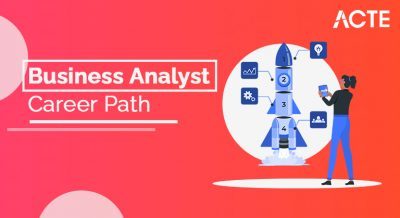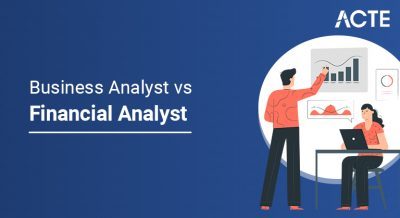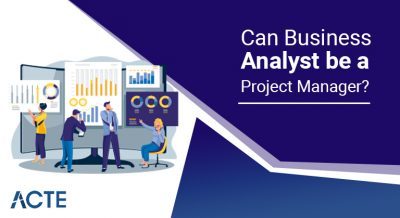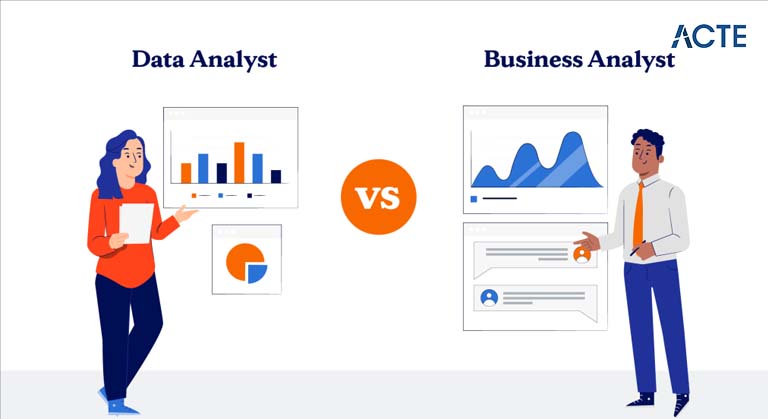
- Role Overview and Scope
- Data Focus vs Business Requirement Focus
- Tools and Techniques
- Analytical Methods Used
- Types of Reports and Presentations
- Communication with Business and IT
- Career Path and Certifications
- Use of Statistics and Predictive Models
Role Overview and Scope
In today’s data-driven business environment, the roles of Data Analyst and Business Analyst are both essential but distinct in their focus and responsibilities. While both professionals work with data and contribute to informed decision-making, their approaches and objectives differ significantly. A Data Analyst primarily focuses on collecting, processing, and interpreting numerical data. They use statistical techniques, data visualization tools, and software like SQL, Python, R, Tableau, or Power BI to uncover patterns, trends, and actionable insights from complex data sets. Their work supports organizations in understanding customer behavior, market trends, operational efficiency, and financial performance. Data Analysts translate raw data into meaningful reports and dashboards that inform strategic and operational decisions. In contrast, a Business Analyst’s role centers on understanding the broader business context, which is emphasized in Business Analyst Training. They engage with stakeholders to identify business needs, challenges, and opportunities. Business Analysts analyze processes, gather requirements, and translate them into clear functional specifications for development teams, ensuring that technical solutions align with business goals. Their work often involves process modeling, stakeholder management, and facilitating communication between business units and technical teams. Unlike Data Analysts who focus primarily on quantitative data, Business Analysts integrate qualitative insights and business knowledge to drive project success. While Data Analysts provide the quantitative foundation for decision-making, Business Analysts serve as the bridge connecting business objectives with technical execution. Both roles require strong analytical skills but apply them differently to support organizational growth. Together, Data Analysts and Business Analysts enable businesses to harness data effectively and implement solutions that meet strategic goals.
Are You Interested in Learning More About Business Analyst? Sign Up For Our Business Analyst Training Today!
Data Focus vs Business Requirement Focus
Data Analysts and Business Analysts play complementary but distinct roles within organizations focused on data-driven decision-making. Data Analysts are primarily responsible for collecting, cleaning, and interpreting data to provide actionable insights. Their work revolves around numbers, metrics, and statistical patterns, often utilizing tools like SQL, Python, Excel, and visualization software such as Tableau or Power BI. By analyzing data sets, Data Analysts help organizations identify trends, measure performance, and assess the impact of various initiatives. For example, they might analyze sales data to determine the effectiveness of a marketing campaign, highlighting increases or declines in customer engagement, which is a key aspect of What is Insights-as-a-Service IaaS. Business Analysts, on the other hand, focus on the broader business context. They work closely with stakeholders across departments to understand existing operations, identify challenges, and uncover opportunities for improvement. Their key responsibilities include eliciting and documenting business requirements, proposing practical solutions, and ensuring that project goals align with the organization’s strategic objectives. Unlike Data Analysts who work mainly with quantitative data, Business Analysts also consider qualitative factors such as stakeholder expectations and market conditions.
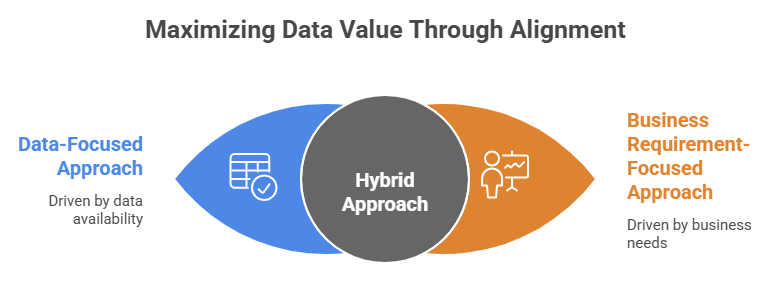
Using the earlier example, a Business Analyst would examine the marketing campaign’s strategy, assess whether it met business goals, and recommend future improvements based on both data insights and organizational needs. While Data Analysts uncover the “what” behind business outcomes through data, Business Analysts focus on the “why” and “how,” facilitating communication between technical teams and business units to drive effective decision-making. Together, these roles help organizations not only understand their performance but also implement meaningful changes to achieve sustainable growth.
Tools and Techniques
- Tool Usage Overview: Both Data Analysts and Business Analysts use a variety of analytical tools, but their focus and tool preferences differ based on their core responsibilities.
- Data Analysts’ Tools: Data Analysts primarily use Microsoft Excel for quick calculations and manipulating data, making it essential for cleaning and organizing datasets.
- Database Querying: They heavily rely on SQL to query large databases, extracting relevant data for analysis and reporting, which complements systems like What Is SAP Human Capital Management HCM.
- Visualization Tools: For presenting insights visually, Data Analysts use tools like Tableau or Power BI, which help create interactive dashboards and charts.
- Advanced Analysis: Programming languages such as Python or R are commonly used by Data Analysts to perform complex statistical analysis, predictive modeling, and automation.
- Business Analysts’ Tools: Business Analysts use Microsoft Excel mainly to build business models, but their toolset also includes JIRA or Confluence for tracking project progress and managing workflows.
- Process and Presentation Tools: They employ BPMN tools like Lucidchart for process mapping and use Microsoft PowerPoint or Google Slides to prepare presentations aimed at stakeholders, highlighting their emphasis on communication and documentation.
- Data Analysts’ Statistical Methods: Data Analysts frequently use descriptive statistics to summarize data and inferential statistics to draw conclusions about populations based on samples.
- Advanced Analytical Techniques: They apply regression analysis to understand relationships between variables, clustering to group similar data points, and forecasting models to predict future trends and outcomes.
- Purpose of Data Analysis: These methods help Data Analysts identify patterns, detect anomalies, and provide insights that support data-driven decision-making within organizations, skills often developed through Business Analyst Training.
- Business Analysts’ Evaluation Tools: Business Analysts use qualitative and quantitative methods like SWOT analysis to assess strengths, weaknesses, opportunities, and threats facing a business or project.
- Identifying Gaps and Causes: They apply gap analysis to find performance shortfalls and root cause analysis to determine underlying problems affecting processes or outcomes.
- Cost-Benefit Analysis: Business Analysts use this method to weigh the financial pros and cons of proposed changes or investments, helping prioritize initiatives that offer the best value.
- Role Differentiation: While Data Analysts focus on understanding what is happening in the data and why it occurs, Business Analysts concentrate on what changes need to be made and how to implement solutions to improve business performance.
- Business Analysts’ Communication Role: Business Analysts spend significant time bridging communication between business stakeholders and IT teams, ensuring clear understanding across both groups.
- Dual Language Proficiency: They must be fluent in both business language and technical jargon to accurately translate business needs into detailed technical specifications for developers.
- Requirement Gathering and Clarification: This role involves actively eliciting, documenting, and validating requirements, making sure that the delivered solutions meet business goals.
- Data Analysts’ Interaction with Business Teams: Data Analysts communicate primarily about data interpretation, focusing on explaining metrics, trends, and insights derived from data analysis, which can support initiatives related to What Is Corporate Social Responsibility CSR.
- Supporting Decision-Making: Their communication helps business teams understand what the data reveals and how those insights impact strategic and operational decisions.
- Limited Role in Software Development Lifecycle: Unlike Business Analysts, Data Analysts generally do not engage deeply in the software development lifecycle unless their responsibilities overlap with areas like data engineering or business intelligence.
- Complementary Communication Focus: Overall, Business Analysts act as translators and facilitators between business needs and technical execution, while Data Analysts focus on making data accessible and actionable for business users.
To Explore Business Analyst in Depth, Check Out Our Comprehensive Business Analyst Training To Gain Insights From Our Experts!
Analytical Methods Used
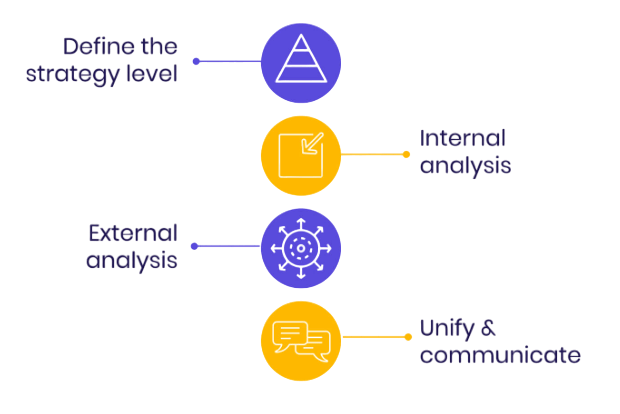
Types of Reports and Presentations
Data Analysts and Business Analysts create different types of reports and documentation that reflect their distinct roles in an organization. Data Analysts primarily focus on generating dashboards, statistical summaries, and visual representations of key performance indicators (KPIs). These outputs are designed to provide clear, data-driven insights that help executives and managers monitor business performance in real time. Dashboards often include interactive charts, trend lines, and summary tables that make complex data easy to understand at a glance. Many organizations automate these reports to ensure that updated metrics are available regularly without manual intervention. By delivering precise and timely data insights, Data Analysts empower decision-makers to respond quickly to market changes, operational challenges, or customer behavior shifts, demonstrating What Is the Importance Of Financial Analysis. In contrast, Business Analysts produce documentation that centers around business requirements and project alignment. Their key deliverables include requirement documentation, use cases, user stories, and business requirement documents (BRDs). These documents serve as blueprints that guide the design and development of systems, processes, or solutions. Additionally, Business Analysts prepare presentations and reports aimed at stakeholder alignment, helping ensure that everyone involved shares a clear understanding of project goals, timelines, and expectations. Their work focuses on bridging the gap between business objectives and technical execution, making sure that the solutions implemented address the real needs of the organization. While Data Analysts concentrate on providing actionable insights through quantitative data visualizations, Business Analysts focus on translating those insights into strategic initiatives. Together, their deliverables ensure that business decisions are both data-informed and aligned with broader organizational goals, supporting effective project outcomes and sustainable growth.
Are You Considering Pursuing a Master’s Degree in Business Analyst? Enroll in the Business Analyst Master Program Training Course Today!
Communication with Business and IT
Career Path and Certifications
Data Analysts and Business Analysts have well-defined career paths with ample opportunities for growth as organizations increasingly rely on data-driven decision-making. Data Analysts typically begin their careers by mastering data collection, cleaning, and visualization. As they gain experience, they often progress to roles such as Senior Data Analyst, where they take on more complex projects and mentoring responsibilities. Many Data Analysts also transition into specialized roles like Data Scientist, focusing on advanced statistical modeling and machine learning, or Data Engineer, emphasizing data infrastructure and pipeline development. To support this career growth, Data Analysts pursue relevant certifications that enhance their skills and credibility. Popular certifications include the Google Data Analytics Certificate, which covers data cleaning, analysis, and visualization techniques. The Microsoft Certified: Data Analyst Associate certification validates proficiency in Power BI for creating impactful business reports, highlighting What Is the Benefit of Modern Data Warehousing. Additionally, the Tableau Desktop Specialist certification demonstrates expertise in one of the leading data visualization tools used widely across industries. Business Analysts have parallel growth opportunities, often advancing to Senior Business Analyst positions where they handle larger projects and complex stakeholder engagements. Some move into Product Owner roles, focusing on product strategy and agile project management, while others take on leadership positions such as Business Analyst Manager, overseeing teams and aligning business processes with organizational goals. Certifications that bolster a Business Analyst’s career include the IIBA Certified Business Analysis Professional (CBAP), which is highly regarded for its rigorous standards in business analysis. The PMI Professional in Business Analysis (PMI-PBA) certification emphasizes project and risk management skills. Certified Scrum Product Owner (CSPO) is valuable for those working in agile environments, focusing on product ownership and stakeholder collaboration. Both career paths offer substantial growth potential, with certifications and experience playing crucial roles in advancing to higher-level positions as businesses continue to embrace data-centric strategies.
Are You Preparing for Business Analyst Jobs? Check Out ACTE’s Business Analyst Interview Questions and Answers to Boost Your Preparation!
Use of Statistics and Predictive Models
Statistics plays a fundamental role in the work of Data Analysts, who extensively apply statistical methods to validate hypotheses and build predictive models that drive business insights. Common techniques employed by Data Analysts include linear regression to examine relationships between variables, decision trees for classification and decision-making processes, and time series forecasting to predict future trends based on historical data. These statistical models help organizations anticipate customer behavior, optimize operations, and improve overall performance. Data Analysts often use programming languages such as Python or R, along with statistical software packages, to develop and test these models, ensuring that their conclusions are data-driven and scientifically sound. Business Analysts, on the other hand, use statistics to a lesser extent, a distinction emphasized in Business Analyst Training. Their primary focus lies in understanding historical trends and gathering qualitative insights through stakeholder interviews and business process analysis. While they rely on statistical outputs and reports generated by Data Analysts, Business Analysts typically do not develop statistical models themselves. Instead, they interpret the results to inform business strategies and recommend process improvements. For example, a Business Analyst might use sales trend data to identify underperforming product lines and suggest operational changes. However, as the lines between data roles blur, some advanced Business Analysts working closely with data science teams gain exposure to predictive analytics and statistical concepts. These Business Analysts may collaborate on data modeling efforts, helping to translate complex statistical results into actionable business requirements. Despite this overlap, the core distinction remains: Data Analysts are more statistically intensive, while Business Analysts emphasize business context and stakeholder communication.


